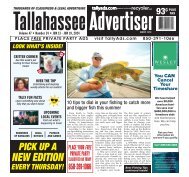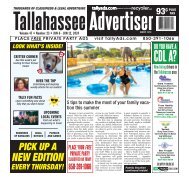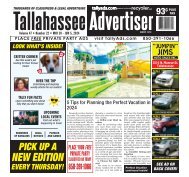Create successful ePaper yourself
Turn your PDF publications into a flip-book with our unique Google optimized e-Paper software.
BRAKES, FROM PAGE 10<br />
Fifty Canadian and U.S. jurisdictions, as well as Mexico’s<br />
National Guard and Ministry of Communications and Transportation,<br />
participated in the 2021 Brake Safety Week. In<br />
Canada, 1,903 CMVs were inspected with a brake-related<br />
OOS rate of 15.4%. The OOS rate related to brakes in the<br />
U.S. was 13.5% out of 28,694 CMVs inspected. In Mexico,<br />
5,167 inspections were conducted with a brake-specific OOS<br />
rate of 2.6%.<br />
Combined, for a North American total, 35,764 CMVs were<br />
inspected during the week. Twelve percent of those vehicles<br />
were restricted from travel because inspectors found brakerelated<br />
critical vehicle inspection item conditions and placed<br />
those vehicles OOS, using CVSA’s North American Standard<br />
OOS Criteria.<br />
That also means 88% of the CMVs inspected throughout<br />
North America during Brake Safety Week did not have brakerelated<br />
critical vehicle inspection item violations. Vehicles<br />
that did not have any vehicle and driver OOS conditions<br />
during a Level I or Level V Inspection may have received a<br />
CVSA decal, which is a visual indicator to inspectors that the<br />
vehicle was recently inspected and had no critical vehicle inspection<br />
item violations. The decal is valid for three months<br />
following inspection.<br />
In addition, during Brake Safety Week, inspectors in the<br />
U.S., Canada, and Mexico recorded 5,667 brake hose chafing<br />
violations. These are common brake-related violations,<br />
whether OOS or not. Inspectors reported brake hose chafing<br />
violations in five different categories (levels of chafing severity),<br />
including two that are OOS conditions, and submitted<br />
that data to CVSA.<br />
QUALITY, FROM PAGE 9<br />
Nationally, the study found America’s highway system is<br />
incrementally improving in almost every category. However,<br />
a 10-year average indicates the nation’s highway system<br />
problems are concentrated in the bottom 10 states and, despite<br />
spending more money, these worst-performing states<br />
are finding it difficult to improve.<br />
For example, 43% of the urban arterial primary mileage<br />
in poor condition is in six states — California, Massachusetts,<br />
New York, New Jersey, Nebraska, and Rhode<br />
Island. Approximately 25% of the rural interstate mileage<br />
in poor condition is in just three states (Alaska, Colorado,<br />
and Washington).<br />
While a majority of states reduced their percentages of<br />
structurally deficient bridges, five states — Rhode Island,<br />
West Virginia, Iowa, South Dakota, and Pennsylvania —<br />
still report more than 15% of their bridges as deficient.<br />
For total spending, three states — Massachusetts, New<br />
York, and New Jersey — spent more than $250,000 per<br />
lane-mile of highway. In contrast, five states — Missouri,<br />
South Carolina, West Virginia, North Dakota, and South Dakota<br />
— spent less than $30,000 per mile of highway.<br />
“States need to ensure their highway spending produces<br />
safer roads, smoother pavement, fewer deficient bridges,<br />
and less traffic congestion,” said the Annual Highway Report’s<br />
Lead Author Baruch Feigenbaum. “The states with<br />
the best overall rankings maintain better-than-average<br />
highways with relatively efficient spending per mile.”<br />
TCA JANUARY/FEBRUARY 2022 TRUCKLOAD AUTHORITY 11

















